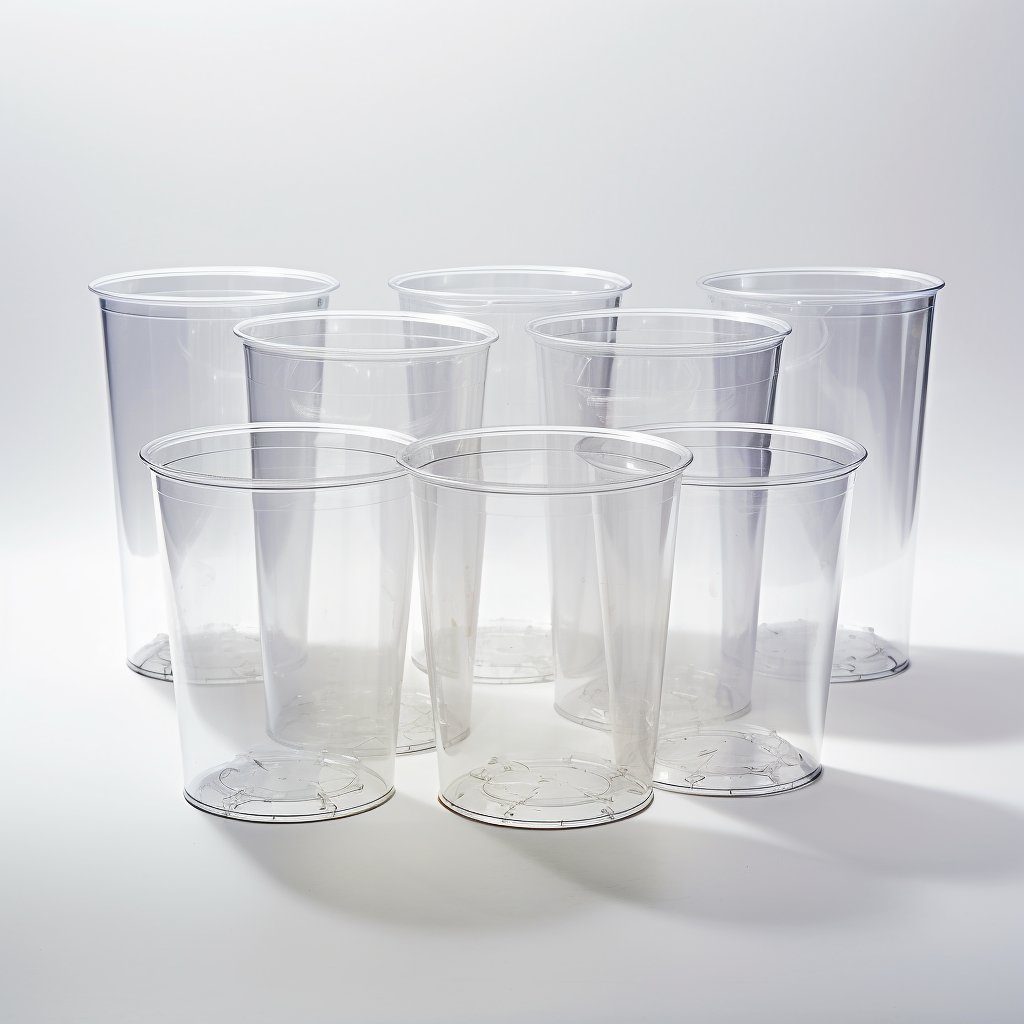Polystyrene, also known as PS or Styrofoam, is a popular plastic that is widely used in various industries. While it has several advantages, including insulation properties and high melting point, it is also known for being difficult to recycle, which raises concerns about its environmental impact.
Polystyrene (PS) is a synthetic, thermoplastic polymer made from monomer styrene and has a density of about 1.05 g/cm3 and a melting point of about 240°C.
It was first discovered by a German chemist named Eduard Simon in 1839, but it was in the 1930s that it became commercially available. In the 1940s, PS was used to make toys and other consumer products. In the 1950s and 1960s, PS began to be used in the food service industry as disposable cups and plates due to its excellent insulation properties.

Material Properties:
PS is a lightweight, rigid, and brittle plastic. It has excellent insulation properties and is often used for applications that require thermal insulation, such as in packaging materials and building insulation. PS is also a good electrical insulator used in manufacturing electronic components such as CD and DVD cases. However, it is not resistant to heat or solvents, making it unsuitable for high-temperature applications.
Industrial Usage:
PS is widely used in various industries, including packaging, construction, electronics, and automotive. PS makes disposable cups, plates, and food containers in the packaging industry. In the construction industry, PS is used as insulation material in buildings. In the electronics industry, PS is used to make CD and DVD cases and computer cases. In the automotive industry, PS is used for interior trim and instrument panels.
Application Areas:
PS has a wide range of application areas due to its unique properties. Some of the major application areas of PS are as follows:
- Packaging: PS is used in the packaging industry for making disposable cups, plates, food containers, and packaging materials.
- Construction: PS is used as building insulation material to reduce heat loss.
- Electronics: PS is used to make CD and DVD cases, computer cases, and other electronic components.
- Automotive: PS is used for interior trim and instrument panels in cars.
Consumer Product Examples:
PS is used in a variety of consumer products, some of which are listed below:
- Disposable cups, plates, and food containers
- CD and DVD cases
- Computer cases
- Insulation material for buildings
- Toys
- Electronic components
Recycling of PS:
PS is one of the most widely used plastics in the world, but it is also one of the most difficult to recycle. PS can be recycled, but the process is complicated and expensive and is only sometimes economically feasible. In addition, PS is only accepted for recycling in some municipal recycling programs. However, some companies specialize in recycling PS and turning it into new products.
As mentioned earlier, PS is one of the most challenging plastics to recycle. It is not accepted for recycling in many municipal recycling programs, and the process of recycling PS is complicated and expensive. However, some companies specialize in recycling PS and turning it into new products. There are also emerging technologies that make it easier and more cost-effective to recycle PS in the future.
Process of PS Recycling:
The process of PS recycling can vary depending on the facility and technology used. Generally, the process involves collecting and processing PS waste to remove impurities and contaminants. The PS is then melted down and reformed into pellets that can be used to make new products.
Advantages of PS Recycling:
One of the main advantages of PS recycling is that it helps reduce the amount of plastic waste sent to landfills. This can have significant environmental benefits, as plastic waste can take hundreds of years to break down and release harmful chemicals into the environment. Additionally, recycling PS can help conserve natural resources, reducing the need for new plastic to be produced.
Disadvantages of PS Recycling:
Despite the benefits of PS recycling, the process has several disadvantages. One of the biggest challenges is the high cost of recycling PS due to the process’s complexity and the relatively low value of recycled PS compared to other materials. Additionally, the quality of recycled PS can be lower than virgin PS, which can limit its usefulness in some applications.
Environmental and Global Impact:
The environmental and global impact of PS recycling can vary depending on various factors, such as the quality of the recycled material and the amount of energy used in the recycling process. Generally, however, PS recycling can have several positive environmental impacts, including reducing greenhouse gas emissions and conserving natural resources. However, the global effects of PS recycling is limited, as PS recycling rates are relatively low compared to other materials, and many countries need more infrastructure and resources to implement effective recycling programs.
Overall, PS recycling is a complex and challenging process that requires significant resources and investment. While there are several advantages to recycling PS, there are also several challenges and limitations that must be addressed to increase the effectiveness and sustainability of PS recycling programs.
Advantages and Disadvantages Compared to Alternative Plastics:
PS has several advantages compared to alternative plastics such as polyethene and polypropylene. It has better insulation properties, is more rigid, and has a higher melting point. However, PS is also more brittle and prone to cracking than other plastics. Additionally, PS is not as environmentally friendly as some other plastics because it is not biodegradable and is challenging to recycle.
Market Price Developments:
The price of PS can be affected by various factors, such as supply and demand, raw material prices, and production costs. In recent years, the price of PS has fluctuated due to changes in the global economy and political climate. However, the overall trend has been for the cost of PS to increase over time as demand for the material continues to grow.
Future Market Prognosis:
The future market for PS is likely to be shaped by several factors. One of the most significant factors is the growing concern over plastic pollution and the environmental impact of plastics. As a result, there will likely be increased pressure on manufacturers to develop more sustainable alternatives to PS. Additionally, technological advances may make it easier and more cost-effective to recycle PS, which could increase demand for the material. Overall, the future market for PS is likely to be shaped by a combination of economic, environmental, and technological factors.
Polystyrene
Polystyrene, or PS, is a widely used plastic with a range of properties that make it useful in various industries. While it has several advantages, including insulation properties and high melting point, it also has disadvantages, including its impact on the environment and its difficulty in recycling. The recycling process of PS is complex, but it offers many benefits, such as reducing plastic waste and conserving natural resources. As consumers, it is important to understand the impact of PS and support efforts to reduce plastic waste by recycling and seeking out alternatives.
As individuals, we can make a difference by reducing our use of single-use plastics, seeking out products made from alternative materials, and recycling whenever possible.






